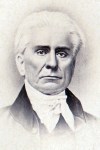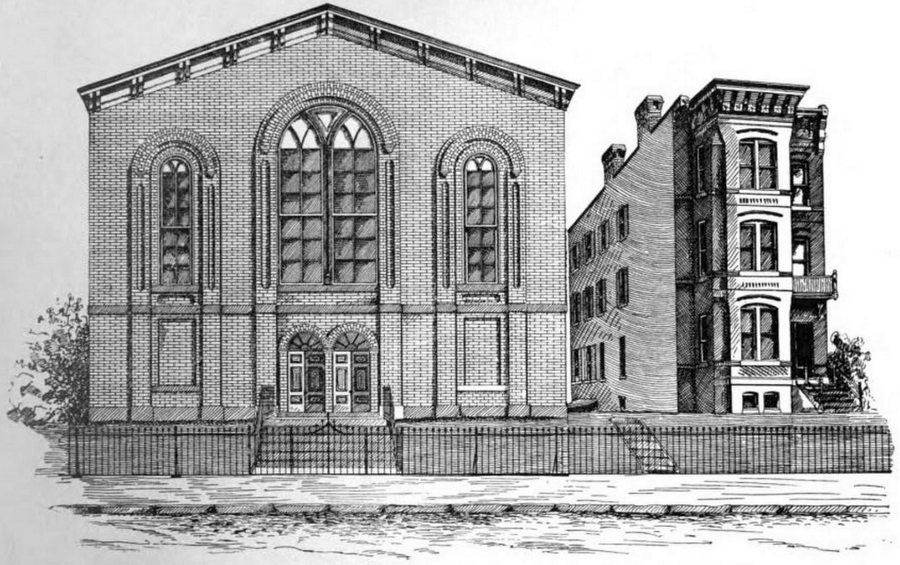 I wrote last week of the first Ebenezer church on 4th Street SE. Today we will look at its replacement – a building that is still standing.
I wrote last week of the first Ebenezer church on 4th Street SE. Today we will look at its replacement – a building that is still standing.
It is unsurprising that a church built in 1811 would have become out of date and unusable by 1857. This is exactly what happened to Ebenezer. In spite of its age, it was apparently not an easy decision to move beyond it. Returning to Ferguson’s Methodism in Washington, District of Columbia, we find that the end was tough for some members of the church:
With what tender feelings must the people have gathered to attend the final services in “Old Ebenezer.” What scenes had been enacted within its walls! What glorious history it had. What multitudes had been converted at its altars!
The final service was preached by Beverly Waugh (pic) who had originally, as a young pastor, seen to the building of this edifice. The congregation moved a few blocks east to the Odd Fellows Hall, while the old bricks were removed and a new building was built. As so often, the greatest difficulty was in the raising of the money for the enterprise. In this case, it was made more difficult due to the recession that hit the US in that year.

The 4th Street Church with the parsonage next door (Google Books)
Services began to be held even before the new church was completed. As soon as there was room in the basement, it was used by the congregation eager to get back into their own four walls. When finally everything was completed
The charge was thus housed in a building in every way suited to its needs. At this time the name of the station was changed from Ebenezer to East Washington. The church is seventy-four feet six inches by fifty-five feet nine inches; has an auditorium that seats eight hundred and fifty people. The basement has accommodations for a large school. There is a separate room for the infant-school, and one for the library; also, two classrooms. The lot on which it stands is large enough to leave sufficient space all around for the free circulation of air and to provide for lighting.
Unfortunately, the congregation was not to use their church for long. Within three years of their moving back in, the Civil War had encroached on D.C. to the point where all large buildings were needed for hospitals. The new building was just the sort of place that was being used in this manner. The congregation had to move out, at first back to the Odd Fellows Hall, then later to Christ Church, and finally to a purpose-built chapel on E Street.
However difficult it was for the members of the church, the wounded who were brought to the church had it worse: “One of the soldiers, a few minutes before his death, was heard to exclaim with a loud voice, ‘Here!’ Being aroused, he said, “Why did you call me back? I was answering the roll-call in heaven.’”
After the war, the congregation regained use of their church, and, in 1870, renamed it again, this time to Fourth Street. It remained thus for 20 years, when it was deemed finally too small, at which point then Trinity Methodist church was built.
The old Fourth Street building remains; it is currently being repurposed into condos.
